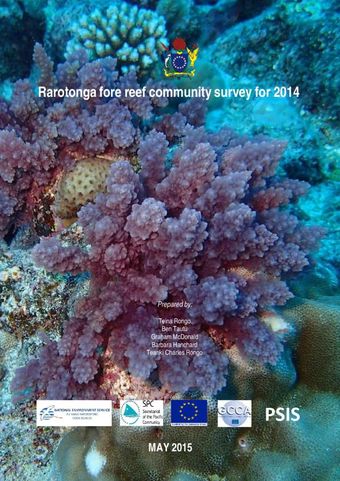Rarotonga fore reef community survey for 2009
- Description:
- Previous reef surveys on Rarotonga have shown that the crown-of-thorns outbreak in the late 1990s degraded the fore reefs to its current state departure of corals. The 2006 survey indicated that average coral cover at most sites were less than 5%, however it was noted that recovery was occurring. This is consistent with the present survey, which indicated that most sites have doubled their average percent coral cover after three years with some sites showing a greater than three-fold increas.
- Display date:
- 2009
- Location:
- Cook Islands
- Collections:
- Secretariat of the Pacific Regional Environment Programme (SPREP)
- Publisher:
- Cook Islands National Environment Service (CIES), Secretariat of the Pacific Community (SPC)
- Content partner:
- Secretariat of the Pacific Regional Environment Programme (SPREP)
- Availability:
- Not specified
-
Copyright status: All rights reservedFind out more about what you are able to do with this itemThis item is all rights reserved, with means you'll have to get permission from Secretariat of the Pacific Regional Environment Programme (SPREP) before using it. For more information, please see our use and reuse page.What can I do with this item?Non-infringing useNZ copyright law does not prevent every use of a copyright work, and this item may be hosted by an international institute or organisation. You should consider what you can and cannot do with a copyright work.No sharingYou may not copy and/or share this item with others without further permission. This includes posting it on your blog, using it in a presentation, or any other public use.No modifyingYou are not allowed to adapt or remix this item into any other works.No commercial useYou may not use this item commercially.
Related items
Welcome and warm Pasifik greetings
The information on this site has been gathered from our content partners.
The names, terms, and labels that we present on the site may contain images or voices of deceased persons and may also reflect the bias, norms, and perspective of the period of time in which they were created. We accept that these may not be appropriate today.
If you have any concerns or questions about an item, please contact us.


